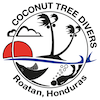
Diving to drink…
Drinking and diving is a pretty serious no no, for obvious reasons. This blog post is not going to cover that today. What we’re doing today is more along the lines of diving for the sake of drinking. For those of you who have spent time around Coconut Tree you may know of a time-honoured tec tradition of leaving behind a bottle of wine on your final deep dive. The idea came from a couple of guests that had come down to us from Spain that had said where they dive, it was common for staff to deposit bottles of wine underwater on the ocean floor, the purpose being, to improve the taste. Now the honest truth, we did absolutely no research into these claims initially, but the idea sounded cool so we decided to make it our thing too.
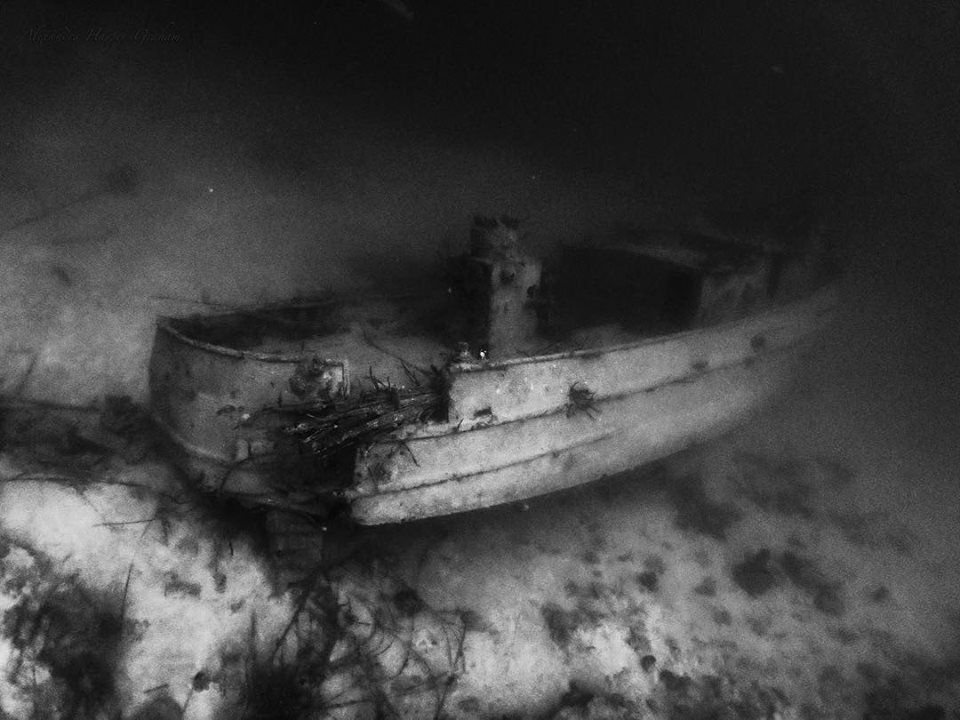
Inspiration
The reason we followed the suggestions of these divers has some obvious inspirations. Discovering shipwrecked champagne and pirate rum are the things of adult day dreams. A bottle of Heidsieck 1907 sold for 275 000 USD at auction, and was one amongst over 2000 varieties discovered on a single shipwreck in the Gulf of Finland. Apparently some of them even tasted pretty good. A British ship sunk in the 1760’s is thought to be filled with bronze canons and gold coins, but it’s the thousands of litres of possibly undrinkable rum that has a lot of collectors vying for it’s recovery.
We know our bottles aren’t going to hold the same sort of history as that of a sunken ship, but the idea of it spending time stored in a place where few in the world are qualified to travel has its own set of mysteries. It’s cool of course but, was it actually as the Spanish divers said? Does it improve the taste?

Underwater Wine Storage
One of the OG winemakers to experiment with this process was also from Spain, Raúl Pérez. He started by sinking bottles for up to 60 days in the bay near his vineyards which now sell for up to 138 USD a bottle. His company however, has reduced the amount of product put in the ocean after a huge amount of them spoiled in the sea (something we have certainly had happen to us, but more on that later).
Viña Maris another winery in Spain has dedicated themselves entirely to underwater wine storage claiming the the “salinity has mineral nuances”. You can even book wine tours that begin with SCUBA excursions to see the underwater cellars. A Napa Valley wine company, Mira has bottles selling for 500 USD a bottle, the same bottle aged on land; 50 USD. The reason? It is said to mature the wine, turning “a 2009 into a 2007”.
So what is the science behind the oceanic benefits?
Wine is ideally stored at 12.8C (55F), as it allows the wine to ‘mature’ at the correct rate, anything warmer can cause it to ferment too quickly and spoil it. The ocean tends to be cold and relatively temperature controlled depending on the locations and depths. Light is another big bad that can increase the rate of aging making the darkness of the ocean a bonus for wine storage.
The final effect is oxygen, too much or too little can cause the wine to taste different levels of bad, 6ppm ( that’s parts per million for us non science folks) being the ideal amount. This appropriate oxygenation during the aging process is controlled by the cork (synthetic or natural), allowing only tiny amounts to pass through. The ocean has relatively low levels of oxygen so less should be diffusing into the liquid.
It’s good to know that we weren’t crazy to follow this initial advice. We have experimented with varying degrees of success usually leaning towards the failing side. Most recently, on Valentine’s Day of last year Monty and Alex dropped a bottle at their favourite spot upon Alex’s completion of her Tec course. This romantic story contributes to the idea that in the end it isn’t just about aging a perfect wine, but about what it can mean to us and our relationship with the ocean.
It did get slightly less romantic when we brought it up and the wine tasted like ass.
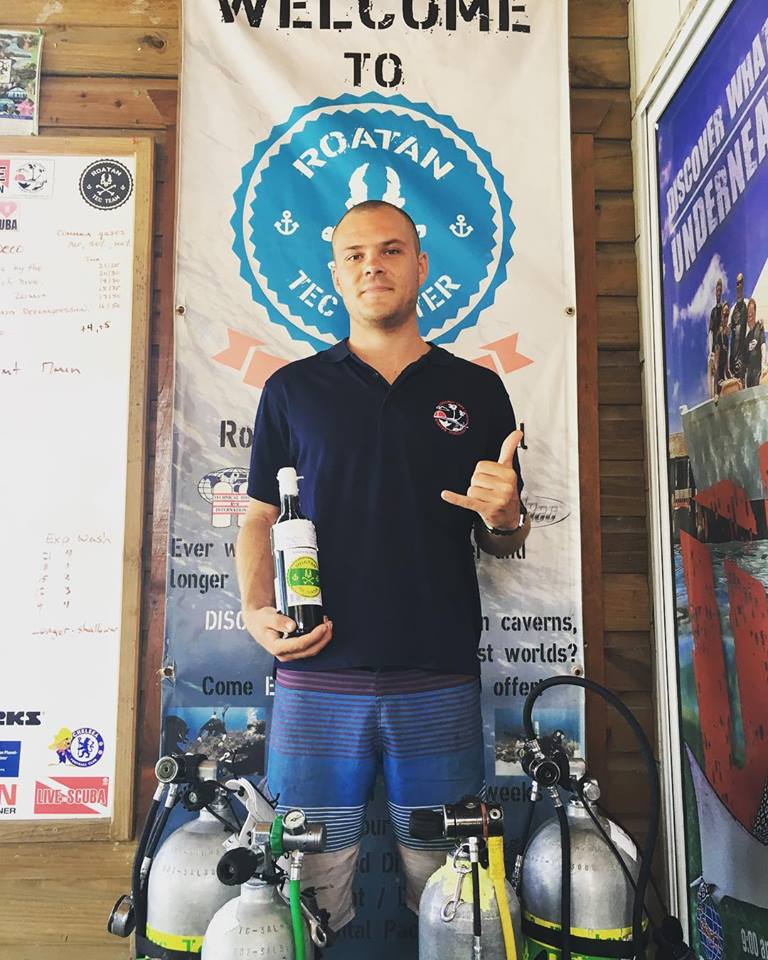
Why were we failing?
Originally we assumed it was the sea water leeching into the bottles so we tried a mixture of duct tape and candle wax and the result; still the flavour of ass.
This is when we decided to embark on this research, if duct tape can’t fix it, what can?
We did have a suspicion that our water temperature might be a little warm for wine storage so we looked for examples closer to home. A Shipwreck from 1864 off the coast of Bermuda, the Mary-Celestial was the closest we could find. The bottles recovered apparently looked super cool but the taste was not so nice.
Master Sommelier, Paul Roberts was quoted saying;

The tasting notes apparently included words like ‘crabwater’ and ‘gasoline’. In fancy sommelier language, this was exactly what our wine was tasting like! Turns out, the water here, just as in Bermuda is too warm.
Local wine expert and technical diver Lauren Schneidewind said;
“The wine would have cooked at 83F (28C), wine really does need to be stored at a much cooler 55F (12.8C). Rum however, is made at hotter temperatures and has roots from hotter climates and can withstand heat better than wine”
Rum?
Now, there was a thought. Flor De Cana is aged at the base of a volcano in Nicaragua so we imagine she was right about the heat. Lauren said she didn’t think that the rum would necessarily improve, but at least it wouldn’t spoil.
Camper English creator of the website Alcademics summarized a seminar held at the Tales of Cocktail event about how liquor and spirits age over time. He confirmed what Lauren had said that the rum would not begin to be effected negatively by temperature until about 37.8C (100F) but is ideally stored at 4.44C (40F). That, and the darkness at depth make our Roatan waters not necessarily the best, but definitely not the worst. For rum oxygenation in the bottle can cause an undesirable vinegar like aroma, so as long as we insured the bottle retained the manufacturer seal, all points to the bottle at the very least, remaining the same.
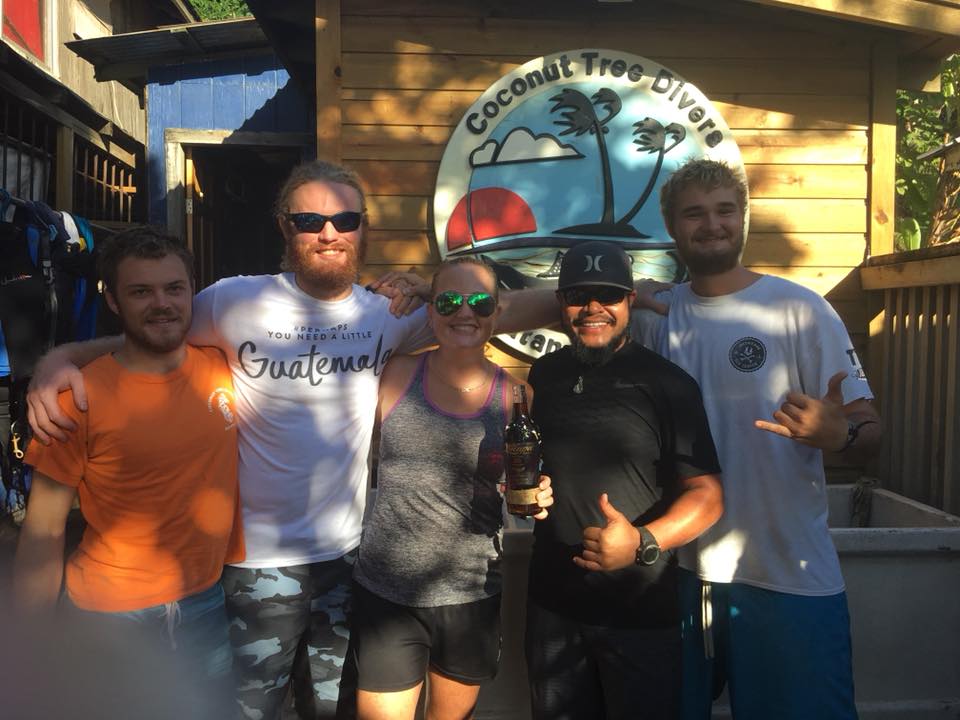
It may not be as exciting knowing that our unique storage method hasn’t created some sort of liquor revolution but that won’t take away from our tradition.
It’s good to know now how these bottles will not just hold a little bit of our own history, but an enjoyable and drinkable beverage. It’s also not a bad excuse to buy a fancy bottle of rum in the name of diving. If our calm warm water is not perfect for wine storage for diving at least, it’s unbeatable.
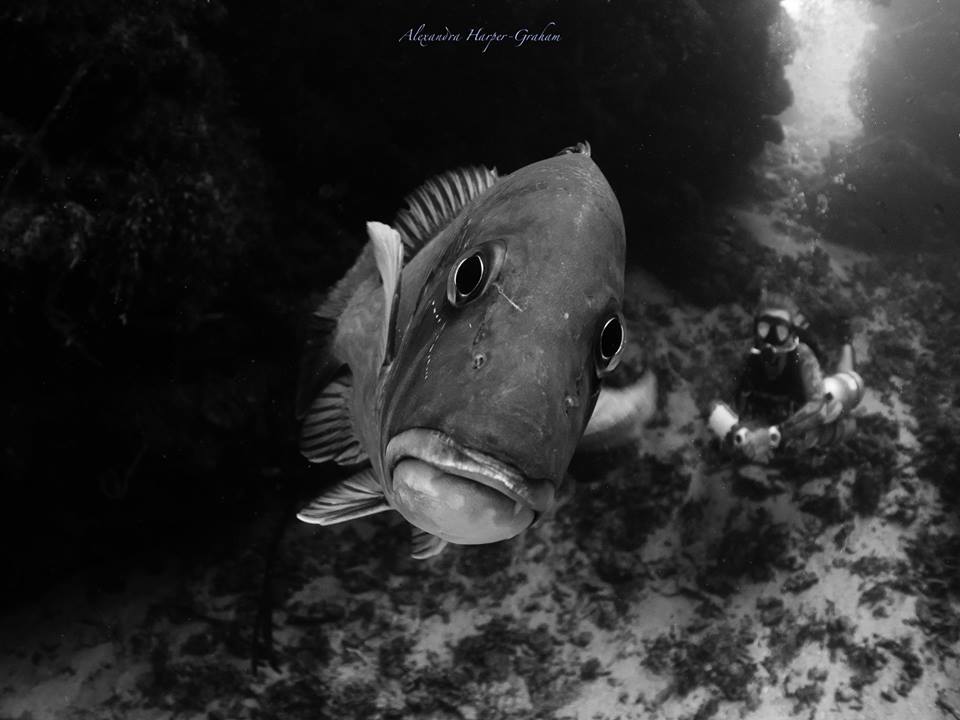
This little photo bomber got Lauren on her way down to place her Zacapa bottle, maybe he was mad she didn’t share. Alexandra HG Photography
To learn more about courses or discovery experiences check out our website. For more updates, photos, and videos from the gang you can follow us on our Facebook and Instagram.
Bonus Story
At the time of our initial experiments wine options were few and far between on Roatan, instead we decided to try Tree’s homemade mango ‘wine’. We took the clear moonshine-like Mango beverage and gave it a shot. The bottle had a plastic cork, it was stored at 18m (60ft) and was left there for 6 months. This would have been a lot easier back then as it was less likely to be discovered by other divers, that being the main reason that it’s our tec divers who have upheld it since then. Monty recalls the liquid going from clear to almost lemonade type turbidity. It also, significantly improved the taste.
We aren’t sure why it worked, mostly because we aren’t really sure what the chemical make up of Tree’s concoction was, but it did certainly inspire us to keep up with the tradition.
All sources used are linked in the section that is applicable. Thanks Again to Lauren of Roatan Wine Room for answering all my questions and the crew at the shop for arguing all the science with me. Alexandra HG, a big thanks for providing me with photo and fodder for these posts. As always thanks to those who I abuse for editing, I have an over use of comma problems. If you have any questions or ideas for posts you would like to see, don’t hesitate to contact us through our Facebook!
